The declining water levels at Lake Mead have garnered national attention. This lake plays a crucial role in supplying water to surrounding states. Lake Mead is situated 25 miles (40 km) east of Las Vegas on the Arizona–Nevada border in the Southwest region. It is one of the largest artificial lakes in the world. From a water capacity standpoint, it is the biggest reservoir in the country. But what lies at the bottom of Lake Mead?
The Hoover Dam forms the lake in the Black Canyon of the Colorado River. Three small tributaries, including the Virgin, Muddy Rivers, and Las Vegas Wash, also feed the lake.
It has a maximum capacity of 1,220 feet (372 meters) and can hold up to 9.3 trillion gallons of water. The vast water supply reaches 25 million people in Arizona, California, Nevada, and some parts of Mexico. It’s also used for agricultural purposes.
History
U.S. Commissioner Elwood Mead oversaw the development and execution of the Boulder Canyon Project. This project resulted in the dam and lake. The Bureau of Reclamation from 1924 to 1936, was honored with the lake’s naming.
In 1936, the National Park Service established and managed Boulder Dam Recreation Area, now known as Lake Mead. It became known as Lake Mead National Recreation Area in 1947.
About 90% of the water in Lake Mead comes from snowmelt in the Rocky Mountains. This water flows via Lake Powell, Glen Canyon, and the Grand Canyon, before entering the Colorado River. The remaining 10% is supplied by local precipitation and groundwater.
About 40 million people have access to water and electricity, thanks to the Colorado River basin. These include residents of Phoenix, San Diego, LA, and Las Vegas, as well as about five million acres of agriculture. In addition, laws like the Colorado River Compact of 1922 enable river water allocation to states, tribal lands, and Mexico.
Not only is it an essential water source, but Lake Mead is also a popular boating destination and recreational area. However, five of the six boat ramps/launches are currently closed. According to the Park Service, the park’s shorelines have changed due to dwindling water levels. Climate change and a 20-year drought are to blame.
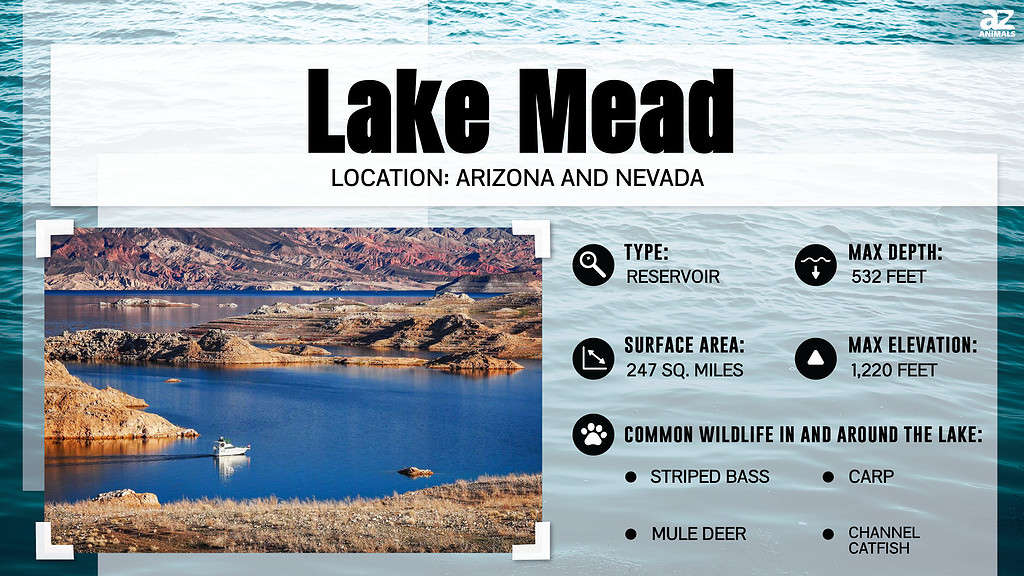
Lake Mead Water Shortage

A historic low of 1,040 feet above sea level and only 27 percent of Lake Mead’s capacity were recorded in July 2022.
©iStock.com/Sean Pavone
The first signs of Lake Mead’s filling appeared in late 1934. It took almost three years to reach an elevation of 1,044 feet in April 1937. The reservoir’s elevation rose as high as 1,225 feet during its peak in July 1983.
Water levels are at their lowest point since April 1937, continuing a 22-year decline. A historic low of 1,040 feet above sea level and only 27 percent of Lake Mead’s capacity were recorded in July 2022. Since the lake’s construction in the 1930s, water levels had never been lower than they were at that time.
Currently, Lake Mead only operates at 30% of its maximum capacity. The water level in Lake Mead was 1,047.38 feet on February 23, 2023. This represents an uptick from the number recorded in July 2022. This is due to rain and freezing weather that affected several areas of the United States during the winter.
Although Lake Mead has marginally refilled since its low point, the Bureau of Reclamation predicts the water levels will drop again in the spring.
According to a study released by the agency, Lake Mead might hit a new record low in 2023. It forecast that water levels might reach 1,024.47 feet. Lake Mead is getting close to the point where it can no longer produce hydropower at the current water consumption rates.
The lake will become a “dead pool” if the level falls too low (below 895 feet above sea level). At that point, water won’t be able to pass the dam.
Shrinking Supply to States
The pressures placed on the river have not decreased despite the decline in flow. The Upper Basin states have consumed half of their allotment—about 3.7 million acre-feet annually—over the past 20 years and intend to use more.
States in the Lower Basin currently utilize the entire 7.5 million acre-feet available to them.
Most years, the river rarely reaches the Gulf of California, where it historically empties into the Pacific Ocean in Mexico.
The basin states implemented a series of cuts in 2007 when Lake Mead reached predetermined levels. Arizona, the state with the most recent rights to the river’s water, was to receive the first cuts under the terms of the deal when the lake dipped below 1,075 feet above sea level. After that, Mexico and other states would need to consume less water as the level fell further.
The states developed a “Drought Contingency Plan” in 2019. It became clear that the states may require more drastic measures, asking for more cuts during each high-risk period. The plan required all water users to cut back on 1.375 million acre-feet in the worst-case situations.
In August 2021, the Bureau of Reclamation announced the river would experience its first-ever water shortfall. The lake was 35% full and 1,068 feet above sea level.
According to the Bureau of Reclamation, significant cuts are required to maintain sufficient water levels in the reservoirs for the continued functioning of the hydroelectric facilities. For example, a level below 950 feet above sea level prevents the Hoover Dam on Lake Mead from producing any electricity.
America’s Largest Reservoir and its Mysterious Finds
Since 2000, Lake Mead’s water level has decreased by about 170 feet due to the protracted drought. As a result, the lakebed has become significantly more exposed, and its shoreline has considerably receded.
Known as the first national recreation area in 1964, Lake Mead has enjoyed popularity as a tourist destination with beautiful scenery. According to some residents and frequent tourists, the lake is now much different from how it once was. But despite water issues, Lake Mead is still one of the best places to go for a range of water sports.
Interestingly, the climate crisis is drawing a new breed of visitors, with a new crop of tourists going treasure hunting to see the latest exposed finds at the lake. Various discoveries came to light as water levels dropped to unprecedented lows between May and October. As a result, America’s largest reservoir has been exposing long-buried mysteries and other puzzling discoveries.
1. Human Remains
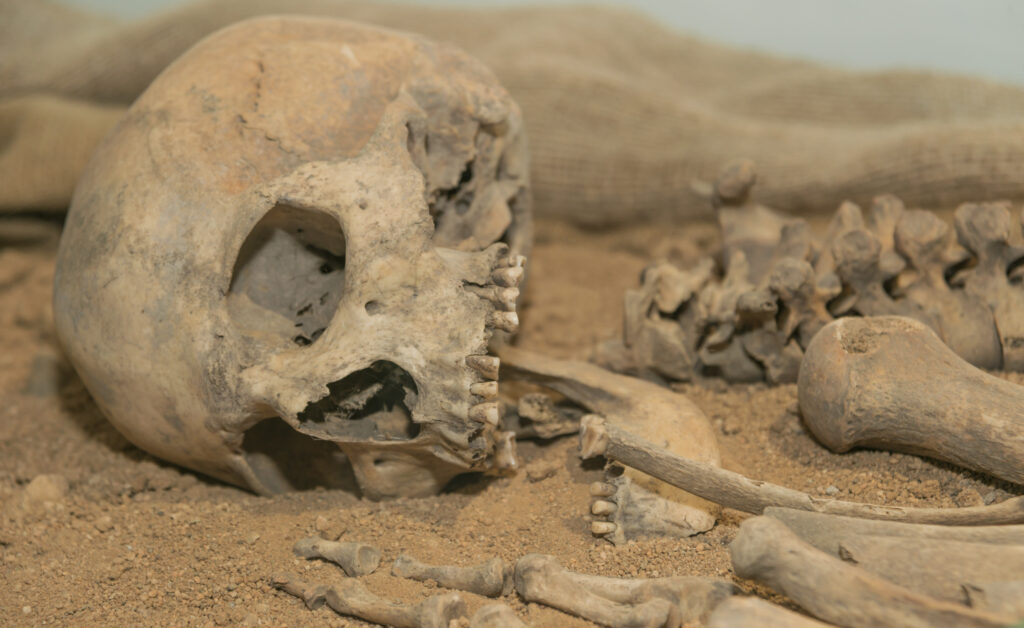
Two sisters paddling surfboards in Callville Bay stumbled upon the remains of 42-year-old Thomas Erndt, believed to have drowned 21 years ago.
©GAS-photo/Shutterstock.com
In May 2022, a boating couple found human remains in a barrel close to Hemenway Harbor. Upon investigation, the Las Vegas Metropolitan Police revealed that the body belonged to a shooting victim from the 1970s to early 80s.
The following week, two sisters paddling surfboards in the Callville Bay area stumbled upon what they initially believed to be the bones of a bighorn sheep. They were actually the remains of 42-year-old Thomas Erndt, believed to have drowned 21 years ago.
In July, a picnicking family came across some partial skeleton bones coated in mud near the shore.
There were more finds in the following months, including at least two sets of partial bones at the Boulder Beach side of the park.
2. World War II Era Boat
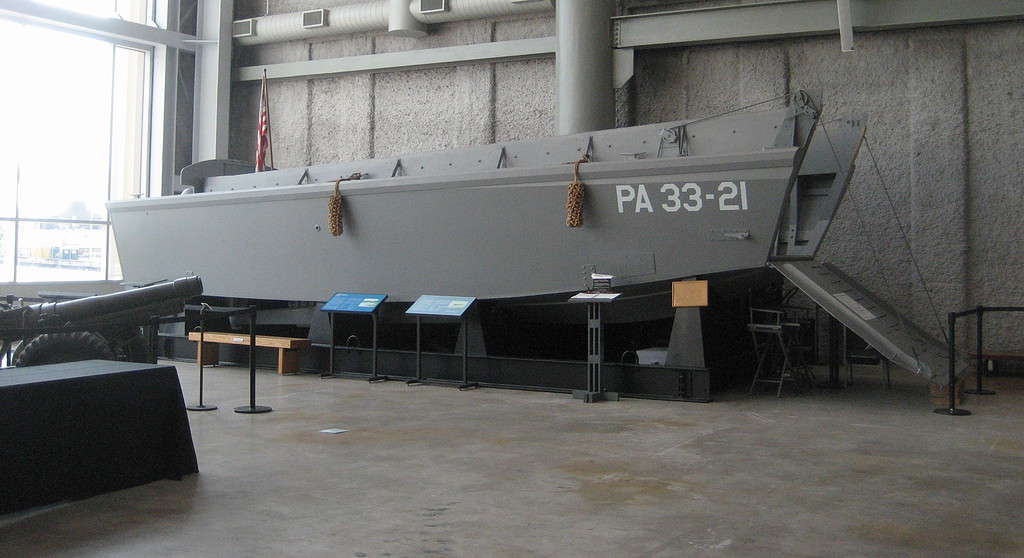
Lake Mead has many fascinating treasures, one of which is a wrecked Higgins boat, similar to the one shown above, which is on display at the WWII Museum in New Orleans.
©Infrogmation of New Orleans, CC BY-SA 3.0 – License
One of the relics exposed by the receding water levels at Lake Mead is a wrecked Higgins boat from the Second World War. The sunken boat near the popular marinas of Hemenway Harbor has continued to attract curious visitors to the park.
Its ribbed body protrudes from the water’s surface like a fish’s fossilized bones. The long craft’s engine has been taken out, and some of it has been dismantled. The body is rusty and dotted with tiny shells and underwater flora.
The rest of the U-shaped boat, which its defensive armor still protects, hides in murky waters and thick layers of silt. The vessel was originally intended to transport American troops from ships to open beaches.
The park administration doesn’t know how or when the boat ended up there, but fascinated visitors have continued exploring the shallow area.
3. Lake Mead B-29

Something went awry while the B-29 Superfortress performed a test fly close to Lake Mead, resulting in the crew’s plunge into the water.
©Everett Collection/Shutterstock.com
After the B-29 Superfortress plane crashed in 1948, it submerged hundreds of feet beneath the lake’s surface. Unfortunately, something went awry while the B-29 Superfortress performed a test fly close to Lake Mead, resulting in the crew’s plunge into the water. Amazingly, the five-person crew made it out alive.
The plane’s location was found in 2003, 55 years after the incident. The plane is now visible for the first time since the crash due to the lake’s declining level. However, it is still irretrievable, and viewing it requires dive equipment.
4. St. Thomas
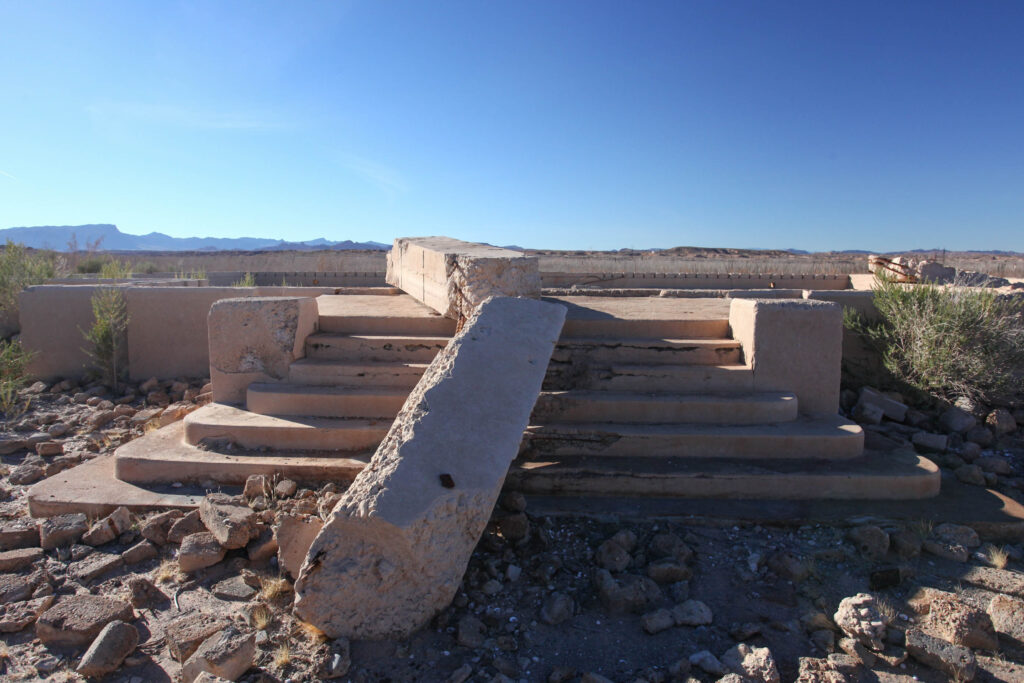
The old Mormon frontier settlement is located on the Overton Arm of Lake Mead, which was once underwater.
©michaelcrawley/Shutterstock.com
Anyone prepared for a short hike can explore this historic site. The old Mormon frontier settlement is located on the Overton Arm of Lake Mead, which was once underwater. However, it has recently resurfaced.
The town on the banks of the Muddy River and Virgin River developed into a well-liked rest area for westbound travelers. However, the Hoover Dam construction and the evolution of big government rendered it ineffective.
5. Cement Plant
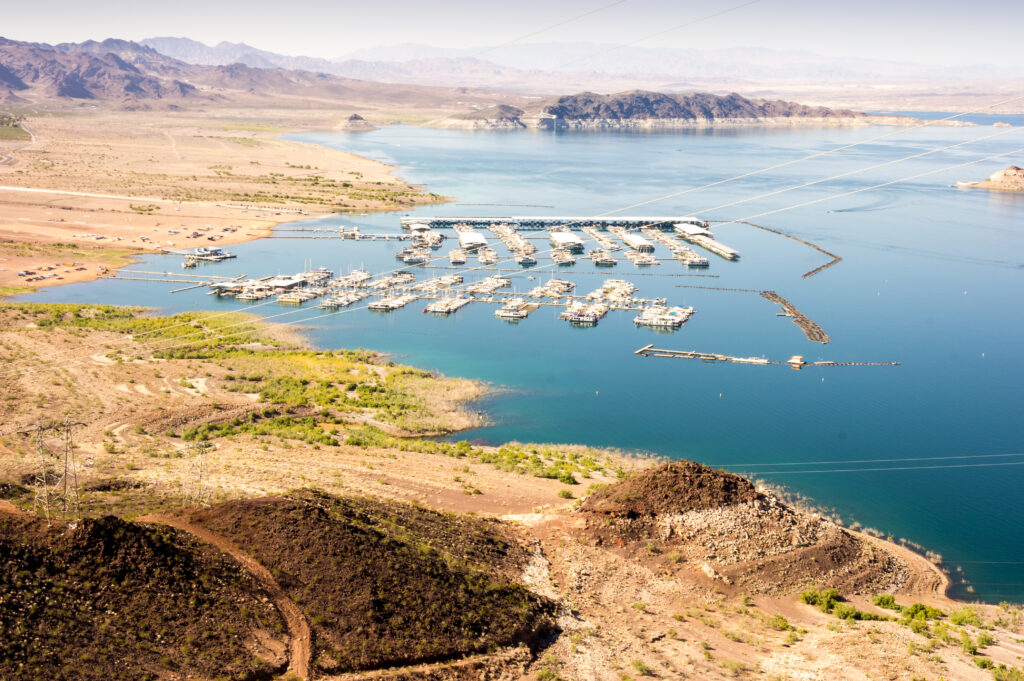
A clarifying tank is now visible on the island in front of Hemenway Harbor.
©Sopotnicki/Shutterstock.com
All the sand and gravel required to construct the Hoover Dam in the early 1930s came from the aggregate cement factory. This factory is now underwater, and it remains an excellent place for freshwater diving in the Boulder Basin. Divers can see four aggregate piles, concrete tunnels, conveyor belt ruins, rail tracks, stairwells, steel tower foundations, and more.
A clarifying tank is now visible on the island in front of Hemenway Harbor.
6. Wall of the Hoover Dam
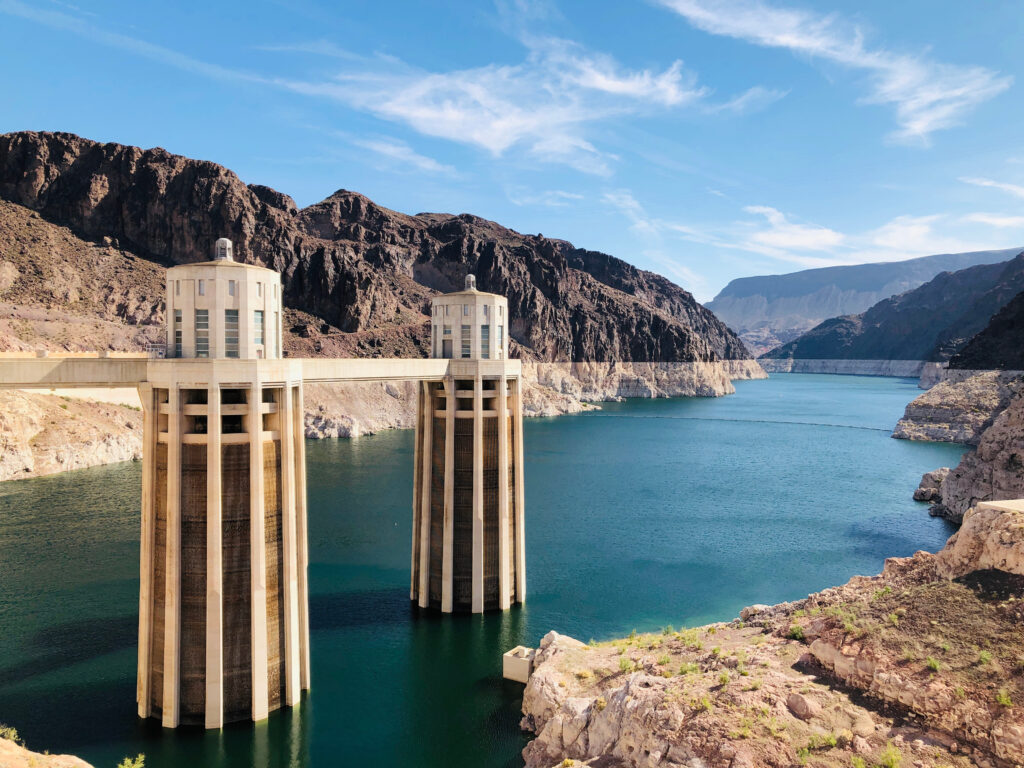
Hoover Dam’s intake towers are exposed thanks to low water levels.
© i.am.anshuljain/Shutterstock.com
The massive Hoover Dam, which keeps water from the reservoir in storage, is directly above the ivory ring. The dam’s massive turbines can generate enough hydropower for almost 1.3 million people annually. Today, they stand high above the lake.
As of June 2022, the intake towers that feed the electricity generators at Hoover Dam are almost completely exposed.
7. Navy PBY Catalina Flying Boat

A PBY Catalina flying boat flipped over and caught fire as it slowly sank to the bottom of Lake Mead on October 24, 1949.
©Martin Spurny/Shutterstock.com
The NPS reports that a Navy PBY Catalina flying boat wreck is submerged in Lake Mead’s waters. The plane flipped over and caught fire as it slowly sank to the bottom of Lake Mead on October 24, 1949, while the pilot was attempting a water landing in the Boulder Basin. Of the five people on board, only one survived.
Scores of other previously flooded boats now hide beneath twigs or perch on sand flats created by receding waters. Most have control panels covered in thick layers of dirt and marine vegetation. A few seem unaffected by years of submersion, as their glossy paints sparkle in the sunlight.
Summary Of The 7 Craziest Things Discovered At The Bottom Of Lake Mead
| Rank | Item Found |
|---|---|
| 1 | Human Remains |
| 2 | World War II Era Boat |
| 3 | Lake Mead B-29 |
| 4 | St. Thomas |
| 5 | Cement Plant |
| 6 | Wall of the Hoover Dam |
| 7 | Navy PBY Catalina Flying Boat |
The photo featured at the top of this post is © iStock.com/Michael Vi
Thank you for reading! Have some feedback for us? Contact the AZ Animals editorial team.






